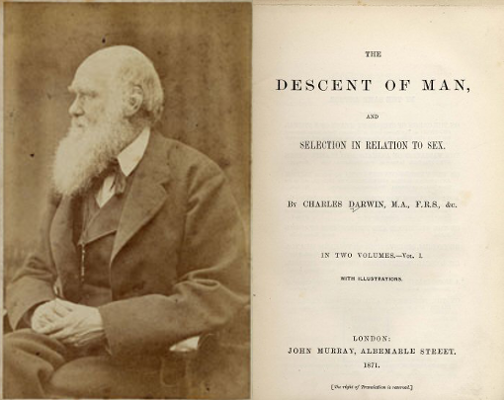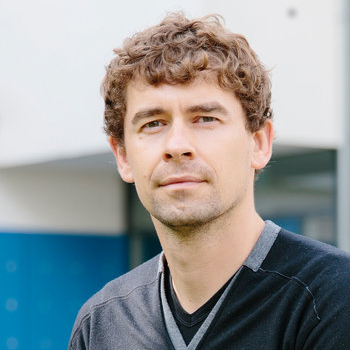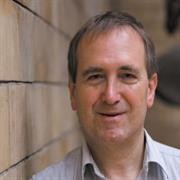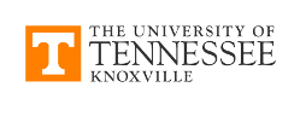Dysoc Webinar Series
Human Origins and Cultural Evolution
Celebrating the 150th anniversary of The Descent of Man
 The Center for the Dynamics of Social Complexity is happy to announce a series of free webinars for Spring 2021 on
Human origins and cultural evolution: Celebrating the 150th anniversary of The Descent of Man.
This series is a continuation of the Fall 2020
Dysoc/NIMBioS Webinar Series on Cultural Evolution.
The Center for the Dynamics of Social Complexity is happy to announce a series of free webinars for Spring 2021 on
Human origins and cultural evolution: Celebrating the 150th anniversary of The Descent of Man.
This series is a continuation of the Fall 2020
Dysoc/NIMBioS Webinar Series on Cultural Evolution.
Organizer: Sergey Gavrilets (Ecology & Evolutionary Biology and Mathematics, DySoC Director, NIMBioS Associate Director for Scientific Activities, University of Tennessee)
Co-organizer: Peter J. Richerson (University of California, Davis)
The Descent of Man, and Selection in Relation to Sex is a book by English naturalist Charles Darwin, first published on February 24, 1871, which applies evolutionary theory to human evolution, and details his theory of sexual selection, a form of biological adaptation distinct from, yet interconnected with, natural selection. The book discusses many related issues, including evolutionary psychology, evolutionary ethics, differences between human races, differences between sexes, the dominant role of women in mate choice, and the relevance of the evolutionary theory to society. (See Wikipedia)
Flyer (pdf)
2021 Spring Schedule (eastern time)
- Feb 2, 12:15 p.m. Joe Henrich (Harvard Univ.) The Secret of Our Success

- Feb 9, 11:45 a.m. Marta Lahr (Univ. of Cambridge, UK) An extended origin: Climate, populations and palimpsests in the evolution of Homo sapiens

- Feb 16, 11:45 a.m. Johannes Krause (Max Planck Institute for the Science of Human History) The genetic history of the Plague: What we learn from ancient pandemics

- Feb 23, 11:45 a.m. Chris Stringer (Natural History Museum, London) What is Homo sapiens?

- Mar 2, 11:45 a.m. Polly Wiessner (Arizona State Univ.) The Embers of Society: Firelight Talk among the Ju/'hoansi Bushmen

- Mar 9, 12:15 p.m. Michael Muthukrishna (London School of Economics) Cultural Brain Hypothesis, Collective Brains, and the Evolution of Intelligence

- Mar 16, 11:45 a.m. Louise Barrett (Univ. of Lethbridge, Alberta) Thinking Outside the Head: Cognitive Ecologies and Evolutionary Psychology

- Mar 23, 11:45 a.m. Sarah Mathew (Arizona State Univ.) War and Peace: The Cultural Evolution of Large-scale Conflict and Cooperation

- Mar 30, 11:45 a.m. Fiona Jordan (Univ. of Bristol, UK) 'A subject too large and complex' for Darwin: The Cultural Evolution of Kinship Terminology

- Apr 6, 11:45 a.m. Manvir Singh (Institute for Advanced Studies, Toulouse) Human Social Organization during the Late Pleistocene: Challenging the Nomadic-egalitarian Model

- Apr 13, 11:45 a.m. Thomas Currie (Biosciences, Univ. of Exeter, UK) The Descent of Rules: Investigating the Cultural Evolution and Ecology of Institutions

- Apr 20, 11:15 a.m. Maria Lapinski (Michigan State Univ.) Communicating Cultural and Social Norms

2021 Spring Webinars
The Secret of Our Success
 Date: 12:15 p.m. EST Tuesday, February 2, 2021
Date: 12:15 p.m. EST Tuesday, February 2, 2021
Speaker: Joe Henrich (Human Evolutionary Biology, Harvard University)
Topic: The secret of our success
Abstract: Humans are a highly cultural species. Unlike other animals, we are entirely dependent on a vast body of culturally-transmitted tools, techniques, skills, know-how and other cultural-psychological adaptations to survive and thrive in an immense diversity of environments. In light of this, how can we build an evolutionary approach that properly seats our species within the natural world while at the same time providing a framework for understanding our often peculiar behavior, psychology, anatomy and physiology? Addressing this question, I'll begin by applying the logic of natural selection to understanding cultural learning and then consider when and where these learning abilities give rise to the process of cumulative cultural evolution. This non-genetic evolutionary process, not found in other species to any significant degree, generated increasingly rich and complex cultural products, such as cutting tools, fire, cooking, words, throwing spears and social norms (institutions), which in turn became potent selective pressures on our anatomy, brains, motivations and cognitive abilities. Having shaped our species for over a million years, these culture-gene coevolutionary processes provide a synthetic framework for understanding many aspects of our species' psychology and lay a foundation for explaining—not merely documenting—the immense psychological variation observed around the globe today.
Webinar slides (pdf)
Some questions posed by webinar participants (pdf)
- (a) Generally, cultural evolution has been slow, with subtle changes happening over centuries before any real or substantial structural change in society is observed. With our technological advancements and the rapid shifts in technology, can this speed up cultural evolution? (b) In a similar vein, as a sexologist, I'm wondering how dating apps/larger dating pools and the option to choose to stay single for much longer (or indefinitely), how may that shift our sexual psychology? This question is inspired by the "WEIRD Monogamy" chapter in your newest book.
- How should we think about language and discourse within a human and cultural evolution framework, particularly with respect to human capacities for cooperation?
- What is your preferred definition of `culture'?
- Should reason and intent be believed applicable to the evolution of complex adaptive systems? As stable complexity reaches inflection point, does not change emerges, verses being produced by reason or purpose? Can we ever know what absurdity might succeed?
- How have you found the reception of your last book among economic historians? Do you think there we are going to see a stronger synthesis between CE and economic history?
- Do you think that cultural evolutionary models can have value for predicting complex social processes of the type that macroeconomics would ideally be able to predict?
- Do you think that cultural evolution can breed a corresponding "engineering" discipline? Does it inform your views on how you would change human social systems?
- Is the cumulative culture bounded? A lot of cultural traits replace or mix with previous ones instead of actually "accumulating."
- The secret of our success is the transmission and accumulation of cultural traits. The critical point for this spread of new technologies is copping the best performer. During our evolution, there was nothing able to know us better than ourselves. However, Yuvak Noah Hariri points out that new technologies can know us better than ourselves. How do you think our cultural and genetic evolution will be affected by artificial intelligence? (Or better saying, by big companies that control artificial intelligence.)
- How has your early fieldwork informed your high-level theories? What are your main tips for young students of anthropology for choosing and approaching fieldwork?
- When you say it's not intelligence but social learning, the question for me seems to be how a complex neural network (brain and cns) adapted for the terrestrial environment, and for sensitivity to others, must function (taking that question as an intuition pump).
- In the context of social norms, do we know how they are culturally transmitted and learned? E.g. through language, or observing actions or their condemnation?
- Do you think people had the cognitive ability to imagine zooming in on an item (or concept) before invention of microscopes, telescopes, and film cameras?
- How can we explain the non-adaptive cultural practices? Does cultural selection compete with natural selection?
- Social learning, as you suggest, is roughly the ability of a human to learn from and enhance upon the knowledge of past generations. However, it seems that when a given human learns and improves upon the knowledge of the past, they do so as a part of a learning community--many minds in interactions learning from and improving upon past knowledge. How does your notion of social learning deal with this community of minds in interaction? Thanks!
- What do you think the roles of emotions an their evolution are in cultural evolution ?
- Do you think Neanderthals' 'unsuccessful' story can be explained on the basis of less 'tuned' learning abilities (or even 'hardwired' components of complex cognition - brain connectivity/genetic variants...) or did unfavorable demographic contingencies (small effective pop size, less connectivity) play a major role here? Thank you!
- As social media expands contact of individuals, could we say that cultural elements inside them (for example, internet memes) are subjected to natural selection?
- Do you think that understanding how human culture has evolved through time help us forge better societies in the future? If you do, how?
- Does social complexity (i.e. societies that comprise multiple groups with distinct norms and unique social identification processes) affect human brains, specifically people's ability internalize social norms? Would such people be 'better' norm-internalizers?
- Sorry if I missed this but why would warmer climates have more sonorous languages? How credible is the evidence for this?
- Naive biologist question here: if mutations are the substrate of biological evolution, how do you explain the kind of experimentation that leads to cultural innovations? E.g. your example of nardoo was really compelling, but do humans just naturally add ash to inedible plants as a matter of course? (Especially without a causal understanding of the process?)
- Around slide 23 or so you mentioned "innovation without invention" (or, was it vice-versa?), due to `promiscuous copying' (combining things). But, (my question) is not `combining (i.e. synthesizing) 2 or more old things' the universal formula for creativity (provided the new synthesis: works, ie - is new, useful, surprising)? (Sorry if I misheard, or misunderstood! :)
- Have longevity and population densities come together to start 'homonisatiion'?
- Very similar ideas to those developed in my last book, Evolution Driven by Organismal Behavior, indeed, there is an increasing convergence about these topics, from many fields of science.
- ps://www.amazon.com/Evolution-Driven-Organismal-Behavior-Mismatches/dp/3319475800
- You found that cultural trait advances by comping the best and by social interaction within a group. Social media seems not to enhance the overall connectedness but to create bubbles. Do you think that today's political extremist is a consequence of optimizing beliefs with these bubbles? Do you think there should be a governmental policy regulating the creation of those extremist groups (e.g., 4G WiFI causes COVID-19, or flat earth, or the invasion of Congress)?
- Could you explore on the relationship between the evolution of cooperation and the evolution of language? The cooperative dilemma, etc.
- Great talk! Given that there is extensive evidence (like Moore & Perston 2016) that even early Acheulean stone tools might very well lie in our Zone of Latent Solutions (Tennie et al.), do you think the claim that this process hit off 1Ma holds? Does it not seem more likely/possible that cumulative culture emerged ~500ka (only shortly before the craniofacial feminization, possibly an anatomical proof for increasing cooperation)?
- Is the choice of wealthy people to have fewer children really maladaptive, or given over population is it species adaptive?
- Applied research that aims to alleviate social or other problems is mainly focused on developing causal understanding and identifying specific factors that have the largest impact. However, the results of such conscious intervention attempts are often disappointing. Do you think that there could be an alternative approach that would better harness cultural evolutionary processes?
- How might globalization and social media impact future dynamics of human cultural evolution, with expending but also more dispersive, fluid social networks?
- is it possible that globalization negatively affects a population because it brings new products / methods (e.g., intensive agriculture) that has not evolved locally?
- Is there a non-return point in the process of self-domestication?
- Is gene-culture coevolution making WEIRD people genetically different from the rest?
Selected questions are discussed in the Q&A session at the end of the webinar.
An extended origin: Climate, populations and palimpsests in the evolution of Homo sapiens
 Date: 11:45 a.m. EST Tuesday, February 9, 2021
Date: 11:45 a.m. EST Tuesday, February 9, 2021
Speaker: Marta Lahr (Human Evolutionary Studies, Archaeology and Anthropology, University of Cambridge, UK)
Topic: An extended origin: Climate, populations and palimpsests in the evolution of Homo sapiens
Abstract: In the 1980s, a recent origin of Homo sapiens in Africa was proposed, leading to enormous controversy before its eventual acceptance. More than thirty years on, this model is now the orthodoxy. But is the model still valid? Ancient genomic and hominin fossil data have challenged the short chronology of the original model, the idea of complete replacement of archaic forms, as well as the notion of a single out of Africa dispersal of modern humans. Together, these lines of evidence might suggest a more prolonged process, under different climatic conditions, and possibly involving multiple populations, which may be best described as multiregional evolution at a continental level. However, new fossils have revealed the presence of parallel hominin lineages in Africa in the last million years, while archaeological and faunal evidence points to important local discontinuities. In this talk, I will discuss new evidence and ideas about our African origins, and consider the extent to which we should rethink the theoretical premises of the original 'out of Africa' model. At the end, I will explore the question of what may explain the evolutionary success of our species.
Webinar slides (pdf)
Some questions posed by webinar participants (pdf)
- Is there any evidence of some migration into Africa?
- (a) What is that framed picture, mounted on the wall behind you in your study there. And, (b) is it now outdated/superseded, due to your exciting new research you have just presented?
- Are there any precedents for such energetic excellence in other life forms before hominin? Are there any similarities in the evolution of such energetic excellence?
- I have always been fascinated about hunter gatherers. How far are we in terms of researching them and what do you await from geneticists?
- Is there any evidence of genocide practiced by Homo sapiens against Neanderthals and other hominins?
- Does the presently available data answer the question whether hominins/climate have a role in the turnover or faunal dynamics of Africa?
- How do you think the mega-drought periods of contraction and fragmentation affected populations reintegrating with each other? Would this have pushed and improved social/collaborative capabilities of sapiens?
- What is that new paper from China you mentioned that we are waiting on?
- How does the Jebel Irhoud mandible compare morphologically with the one from Zhirendong (=Zhiren Cave) in Guangxi, southern China?
- Is there evidence of occurrence of epidemics?
- Is there evidence for similar population fragmentation and diversification in other large mammals (or other animals in general) during this period that parallels the hominin evidence you presented?
- Thank you for the very interesting talk! Do you think the Jebel Irhoud and Florisbad fossils would be better interpreted as late forms of archaic humans (H. heidelbergensis?) instead of early H. sapiens (contra pan-African proponents), since the crucial trait of cranial globularity is lacking?
Selected questions are discussed in the Q&A session at the end of the webinar.
The genetic history of the Plague: What we learn from ancient pandemics
 Date: 11:45 a.m. EST Tuesday, February 16, 2021
Date: 11:45 a.m. EST Tuesday, February 16, 2021
Speaker: Johannes Krause (Max Planck Institute for the Science of Human History, Jena, Germany)
Topic: The genetic history of the Plague: What we learn from ancient pandemics
Abstract: High throughput DNA sequencing has revolutionized the field of archaeogenetics in the past decade, providing a better understanding of human genetic history, past population dynamics and host pathogen interactions through time. Targeted DNA capture approaches have allowed reconstructing complete ancient bacterial genomes providing direct insights into the evolution, history and origin of some of the most infamous bacterial pathogens known to humans such as Yersinia pestis, Mycobacterium tuberculosis or Mycobacterium leprae. Here we discuss the potential of ancient pathogen genomics using Yersinia pestis as a model organism. Phylogenetic comparisons of modern and ancient Y.pestis strains spanning over 5000 years of human history from the Stone Age to modern times are discussed. They provide direct evidence for the timing and emergence of major virulence factors essential for the transmission of bacteria by fleas. We furthermore present the oldest reconstructed genomes of Y.pestis that are fully capable of causing the bubonic form of plague from the Eastern European Bronze Age, suggesting that the emergence of this form of the disease happened more than 1000 years earlier than previously thought. Temporal studies of pathogens might thus throw new light on the origin of human diseases and potentially allow predicting and preventing further transmissions and disseminations in the future.
Webinar slides (pdf)
What is Homo sapiens?
 Date: 11:45 a.m. EST Tuesday, February 23, 2021
Date: 11:45 a.m. EST Tuesday, February 23, 2021
Speaker: Chris Stringer (Human Evolution, Natural History Museum, London, UK)
Topic: What is Homo sapiens?
Abstract: The species name Homo sapiens has at times been applied to a variety of early humans, including the Neanderthals, and this was still the case when I began my PhD in 1970. However, at about that time, the American anthropologist William Howells started to use the term 'anatomically modern man' to distinguish recent humans and their close relatives in the fossil record from ancient people like the Neanderthals, who did not show all the skeletal characteristics of recent humans. Since then, the updated term 'anatomically modern human' has often been shortened to just 'modern human', and this has usually been synonymised with a more restricted usage of Homo sapiens to exclude people like the Neanderthals. In my talk I will try to disentangle the different usages of 'modern human' and Homo sapiens, when applied to the fossil record and also look briefly at what might make modern humans different behaviourally.
Webinar slides (pdf)
Some questions posed by webinar participants (pdf)
- NOTE from Chris Stringer: I realised I had made one probable error in the questions, when I said (I think) that the EPAS gene was linked to shovel-shaped incisors in E. Asians. I should have said EDAR (as below, from Gene linked to breastfeeding may have boosted survival of earliest Americans | Science | AAAS (sciencemag.org) https://www.sciencemag.org/news/2018/04/gene-linked-breastfeeding-may-have-boosted-survival-earliest-americans All the best Chris The gene in question is known as EDAR. Native Americans and Asians carry a version of the gene that is linked to thicker hair shafts, more sweat glands, and shovel-shaped incisors. A variant of this gene-V370A-arose about 30,000 years ago or so in China when the climate was hotter and more humid, which prompted researchers to speculate initially that it was advantageous to have more sweat glands in that environment. But the gene variant swept through the ancestors of Asians and Native Americans about 20,000 years ago, when the climate where they lived in Asia and Beringia (the now-submerged land between Asia and Alaska) was colder and dryer. So the actual cause of the gene's spread has been unknown.
- How does nutrition impact morphology in modern and archaic H. sapiens? Would nutrition resources and glaciation cycles impact on resources produce signals in the morphology in a region?
- When you talk about an 'unsuccessful' early dispersal ~200ka, what exactly are the implied events? It seems unlikely that every single one of the arrivers in Eurasia went extinct without 'interbreeding' with other hominins? Maybe earlier hominins should indeed not be classified into as many species as they are? Maybe they were just more variable (if genetic data doesn't suggest otherwise)?
- What is the likelihood that we will find Homo sapiens remains with more than 2% Neanderthal DNA?
- Thank you for the fascinating talk. What do you think about the 'braided stream' metaphor? Should it replace more tree-like phylogenies or is the web-thinking a little overstated in the case of recent human evolution? Thank you!
- What does the fact that sapiens and 'Neas' seem to have shared parasites tell us about their relative separation?
- Thank you for the great talk! In the example of the 65,000 years old Australien site, you mentioned that they used advanced technology and pigments, so it must have been modern humans. But there were no findings of human fossils and it has been proven that Neanderthals used pigments and advanced technology. So isn't it possible for the site to be the result of activities of another human species than modern humans?
- Regarding those Asian early Late Pleistocene dental remains with 'modern' features, how would you argue an early dispersal of sapiens out of Africa to be a more plausible interpretation than 'modern' features evolving autochthonously in Asia, like the Chinese multi-regionalists have argued for decades? What about other features like the flat, shovel-shaped incisor which was deemed by this school to be a linkage between Asian archaic humans and modern populations of East Asia?
- But so if Neanderthals also had language in your opinion, does that push the origin of language back at least to the sapiens-Neanderthal MRCA? Or can you imagine language involving convergently in sapiens and Neanderthals?
- Thanks Chris, great talk. Do you think it possible that the Neanderthal brain might be fundamentally the same to the human brain in its internal structure and organisation, and the surface shape difference reflects what you get when you mold essentially the same brain inside different shaped skulls? (where by 'human' I mean us living humans!)
- In your view is global cultural evolution making humans more or less resilient to future environmental change?
- Could incest and minimal contact, and the variance of birth defects that arise from that, be a cause of small, remote populations being replaced/wiped out?
Selected questions are discussed in the Q&A session at the end of the webinar.
The Embers of Society: Firelight Talk among the Ju/'hoansi Bushmen
 Date: 11:45 a.m. EST Tuesday, March 2, 2021
Date: 11:45 a.m. EST Tuesday, March 2, 2021
Speaker: Polly Wiessner (Human Evolution and Social Change, Arizona State University)
Topic: The embers of society: Firelight talk among the Ju/'hoansi Bushmen
Abstract: The control of fire in the middle paleolithic extended the day, creating effective time for social activities that did not conflict with productive time for economic exploits. Comparison of 174 day and night time conversations among the Ju/'hoansi (!Kung) Bushmen of southern Africa, supplemented by 68 translated texts, suggests that day talk centers on economic matters and criticism to regulate social relations. Night conversations, by contrast, steer away from conflict to entertaining stories about real people and events to capture the workings of entire institutions in a small-scale society with little formal teaching. Night talk plays an important role in remembering others in vast networks, eliciting intergroup understanding and transmitting the 'big picture' of cultural institutions and their variation in practice. Firelit hours provided an important space for the development institutions that created regional regularity of behavior and generated cooperation and trust. Stories whether transmitted in person, via books, or through film continue to play an essential role in all cultures today.
Webinar slides (pdf)
Some questions posed by webinar participants
- Listening to what people talk about?, is there also information available in attending to what they do not talk about?
- I know that is not the main point of the presentation, but your comment about the "fire control and reduce length of sleep" is quite interesting... Can you mention some literature about this association? Thanks in Advance!
- Are you familiar with the neurocognitive research indicating that groups listening to stories develop syntonized brain states?
- I understood in your paper that this was not the point of your analyses, but as a developmental scientist, I'm very curious about any analyses you may have done involving children & would be grateful if you could talk about this. Inspired by the richness of fireside conversations you had described, with colleagues including Jonathan Stieglitz we collected audio-recordings as children wore a recording device from 5pm to 9am -- but we found mostly silence in these! Do you have any comments about the richness of conversations in the presence of, and perhaps addressed to, children 0-5 years, at day or night?
- Is there a difference in gullibility in day/night stories? In this Twitter age, what governs the truthfulness of the stories?
- Can you expand on the idea that storytelling involved more rhythm? Were some sung and clapped, like gano storytelling among the BaYaka?
- This is so interesting, thank you. It?s curious to me how prime time TV in our own culture mimics the same patterns you demonstrate (fiction at night, news in the day). But with streaming media, we see people seeking out stories throughout the day - it would be interesting to hear if you think there are parallels to be drawn here, and if so, what the time-displacement of stories may signify or change. Did the story about the marriage have a happy ending?
- Thankyou very much for a very interesting talk! I like the notion that night talk is important to bring people together and transmit culture- I was wondering if there was any evidence that the use of fire (to lengthen the day) is related to cultural innovation? e.g. do you think the time we discovered fire and therefore told stories is related to the cultural boom we see in humans over the past 10,000 years?
- How the sexuality is regulated, are they monogamous? Are women free to choose as in several egalitarian societies? Is there a short term mating like ?one night stands?? I am asking because of violence regulation? Sorry I know you have already addressed that topic, but I was a bit late When the conversations were recorded, were people self conscious and did that change what topics they talked about and how they talked about these topics?
- That was very interesting! Do you have some answers for your initial question? i.e. Why our species is giving up sleeping time to hear stories? (either by the campfire or watching TV)?
- What impact does historic predator impact have on the use of fire. How long does it take to change behavior with the removal of this pressure.
- I'm still unsure about why information gained at night would be more `useful'. Is the fact that the information is disconnected from any real economic/social situation? Thanks!
- If people did not converse during the day, would the conversations change at night? In the 1970?s, did all the youths proactively attended the fireside story telling, and if not, were those who attended better integrated into the society as adults than those who didn?t attend?
Selected questions are discussed in the Q&A session at the end of the webinar.
Cultural Brain Hypothesis, Collective Brains, and the Evolution of Intelligence
 Date: 12:15 p.m. EST Tuesday, March 9, 2021
Date: 12:15 p.m. EST Tuesday, March 9, 2021
Speaker: Michael Muthukrishna (Economic Psychology, London School of Economics, UK)
Topic: Cultural brain hypothesis, collective brains, and the evolution of intelligence
Abstract: The hominin brain tripled in size in the last few million years. So did brains across other taxa. These patterns are a puzzle, because brains are energetically expensive and an animal is better off with the smallest brain that allows it to do what it needs to do to survive. In this talk, I'll discuss the cultural brain hypothesis as an explanation for the co-evolution of brain size and other features of different species, across both asocial and social learning taxa. I'll discuss the narrow space within this model that can lead to a take off in brain size characteristic of humans: the cumulative cultural brain hypothesis. Humans carry cultural brains filled with partial causal models that selectively seek knowledge from others for how to survive and thrive. When these cultural brains come together, society begins to act as a collective brain, with innovations requiring a specific innovator no more than your thoughts require a specific neuron. The collective brain hypothesis extends the cultural and cumulative cultural brain hypotheses to explain human innovation, offering a deeper understanding of human intelligence.
Webinar slides (pdf)
Some questions posed by webinar participants
- Bears are carnivores with very large brains as compared to wolves and dogs, who are very social with wolves having cooperative hunting and such. How do you explain such large brains in a rather solitary species outside mother-offspring bonds?
- In addition, recent studies with bigger sample sizes question the link between brain size and group size
- I'm trying to relate this work with Christopher Boehm's reverse dominance hypothesis and more recent framing in terms of self-domestication in humans. Also, the origin and spread of the capacity for symbolic thought.
- How does your work relate to the self-domestication hypothesis of human evolution? a lot of the features you mention are aligned with Domestication syndrom (extended juvenile period, larger brains, social behavior etc)
- Very interesting talk, thanks! You mentioned that it would have been necessary to "unlock resources". One crucial mechanism to unlock resources for juveniles is paternal provisioning (in particular of meat). In a recent PNAS paper my co-authors and I propose a theory that allows to predict when paternal provisioning likely evolved. Our discussion of fossil evidence suggests this would have been at around 2-1.5 Mya. It would be interesting to know if brain size increased significantly at that time. Do you know if it did? https://www.pnas.org/content/117/20/10746.short
- You seem to suggest that all information of useful. The internet suggests that some information that spreads is actually harmful, which means that we need also our brains also to assess potential information. Any equivalent among, for instance, cetaceans?
- Any thoughts on whether/how the internet (i.e., a tool granting the ability to access and share an infinitude of information near instantly) positively or negatively affects the 'collective brain?'
- Is there a difference between social learning and cultural learning?
- An extended juvenile period could also evolve if reproductive opportunities are limited and fiercely competed over (observed in birds). In the same species, social intelligence could be necessary for gaining these opportunities. Is this a possible
- In completing the Darwinian revolution, will memes and any possible further replicators play a role?
- How do we bring Social Sciences up to speed on evolutionary influence of society and culture? (Updating the Malcomb Gadwell tautology) Have you considered how cooperative breeding could also help to explain long juvenile period. Juveniles can care for and be models for their younger relatives. Could you talk more about whales and dolphins? Have they entered the cumulative culture-sociality-brain size positive feedback loop? And if so, what factors limit how far they can go? Hi Michael. I like your work, and am enjoying your presentation. Question: Social and individual learning involve the acquisition of existing knowledge; do you also take into account the generation of new knowledge? As a simple example, through social or individual learning you can learn that that the world contains snow and men, but it takes creativity to realize it could also contain snowmen. This is quite different from acquiring the knowledge through individual learning about the different forms of snow. There are computational models going back to the 90s that suggest that is what is critical for cumulative innovation. Thanks for considering this question. Liane Gabora Does the amount of skills needed at birth select against future learning capacity. Giraffe's needing to run, whales swim, etc. Both people and animals learn by different means, some visual, some sensory or auditory. How does that play into brain size or Brian construction? Great talk, thank you. Chicken-egg question. A lot of species haven't encephalized obviously. With these feedback loops between increasing brain sizes (mutations?) and increasing group size/complexity, how does this looping process begin in the first place and continue to feed itself? How do you feel the impact of improved medical technologies, i.e increase success in child birthing, has affected the natural selection progress of 'smart' ancestors and the increase of social disabilities, such as autism? Has cooperative breeding changed the trajectory of natural selection?
- Which disciplines are closest to going beyond WEIRD psychology?
- hi micheal thanks for nice presentation! question: how cultural evolution relates to singularity.
- Has intuitive morality been shaped by increasing brain size/increase in group size?
- Now we're curious: can you give us more detail about the book you're writing? Which combination of factors promote that autocatalytic change?
- Pete Richerson: Brain size increase accelerated over hominin evolution (see Miller et al 2019, eLife)
- do you think that elements/features/traits of Social Learning are genetically correlated &, thus, can be acted on by selection?
- Given that adult brain size correlates with postnatal development across mammal species, why shouldn't larger brains evolve by extending postnatal brain growth?
Selected questions are discussed in the Q&A session at the end of the webinar.
Thinking Outside the Head: Cognitive Ecologies and Evolutionary Psychology
 Date: 11:45 a.m. EDT Tuesday, March 16, 2021
Date: 11:45 a.m. EDT Tuesday, March 16, 2021
Speaker: Louise Barrett (Psychology, University of Lethbridge, Alberta, Canada)
Topic: Thinking outside the head: Cognitive ecologies and evolutionary psychology
Abstract: Placed in evolutionary perspective, we humans often think of ourselves as a form of super-charged ape, but we can also think of ourselves as super-sized minds; creatures whose boundaries extend beyond our skin and skull, and who incorporate all manner of external tools and technological resources to form a distributed cognitive system. What we often think of as human discontinuity with the rest of the animal kingdom can thus be seen to emerge from a particularly deep continuity across living organisms. Humans' use of tools and other forms of material culture, public and written language, leverages our cognitive and bodily abilities, so that we achieve far more than our biological brains and bodies could accomplish alone: as Andy Clark says, human brains make the world smarter so that we can be dumb in peace. Thinking of ourselves as extended organisms with fuzzy boundaries offers a distinctive twist on the notion that cumulative culture is the secret of our success.
Webinar slides (pdf)
Review Chapter (pdf)
Some questions posed by webinar participants
- What seems the case is that the human mind, as contrasted to other minds, picks up not only on immediate survival related externals but picks up external relations in a generative way. That is, production of novelty from environmental affordances with little regard to immediate utility.
- Awesome! One implication of what you say is that most developmental psychology is misguided - instead of trying to detect the emergence of representations by devising clever tests to get at what is inside the baby's head, should we hould be paying more attention to how it waves its arms and legs around and sucks its fingers?
- Thank you for this excellent talk! I was wondering what question you think would be more culturally appropriate to ask the Hazda people that would demonstrate their knowledge of causality while using their bows.
- Is DNA an internal form of internal representation? How can a theory of mutation through natural selection can explain anything in evolution of human cognitive abilities without a distinction between external and internal processes? The environment does not create the organ (by itself).
- I would love the booklist shown in one of the early slides. not all the titles/authors were visible on the slide.
- So is your position able to explain the decreasing brain size of humans over the last 30000 years?
- Do you think that after quarantining, and once we get back to normal life, we will be more embodied in our thinking or less, given that our environments have been so restricted the past year?
- A just published book, The Emotional Mind, by Stephen Asma and Rami Gabriel may be of interest for you. One of their points is that perceptions carry situational affordances tagged with emotional biases for actions.
- I wonder if immunological memory may be a better way of understanding our memory than the kind of storage seen in DNA.
Selected questions are discussed in the Q&A session at the end of the webinar.
War and Peace: The Cultural Evolution of Large-scale Conflict and Cooperation
 Date: 11:45 a.m. EDT Tuesday, March 23, 2021
Date: 11:45 a.m. EDT Tuesday, March 23, 2021
Speaker: Sarah Mathew (Human Evolution and Social Change, Arizona State University)
Topic: War and peace: The cultural evolution of large-scale conflict and cooperation
Abstract: Humans have the unusual capacity to cooperate in large groups with unrelated and unknown individuals, including in the life-and-death situations of war. To explain how culture facilitated the evolution of this capacity, we need to examine how cultural norms regulate conflict and cooperation especially in societies without formal institutions. I will present findings from the Turkana, a politically uncentralized population of pastoralists in Kenya, which show that: a) the Turkana maintain costly large-scale cooperation in warfare through peer sanctioning of free riders; and b) Turkana norms regulating punishment mitigate the second-order free rider problem and promote group-beneficial punitive behavior. Additionally, with data from 750 individuals drawn from nine clans of four neighboring ethnolinguistic groups, the Turkana, Samburu, Rendille and Borana, I will show that: a) between-group cultural variation is sufficiently high for cultural group selection to operate; and b) the scale at which cultural variation is maintained can explain the scale at which people cooperate. I will discuss how this suite of findings reveals the role of group-structured cultural evolutionary processes in shaping human conflict and cooperation.
Webinar slides (pdf)
Some questions posed by webinar participants
- What is the social status of warriors among these people?
- are there patterns in when/how often these raids occur (are they regular seasonal things, or do they occur under periods of stress and resource scarcity eg during droughts, as local group population rises, etc)?
- "Could you say something about the scope of what kinds of behaviors count as 'punishment' and which don't? For example, it was interseting that on the slides 'criticize' was a separate category from 'punishment' - why doesn't doing reputational damage to a person count as a way of punishing them?"
- To what extent are these norms relating to punishment formalized in the culture and to what extent are they more like something that 'everybody knows' without specific awareness?
- Are there examples of small cultural variations being exaggerated by cultural attitudes within different groups?
- do any of these ethnic groups have real histories of conflict/competition with each other? Could that be part of the judgement of how threatening these out-groups were, beyond just the cultural distance?
- We observe that there are limits to how culture can foster cooperation but do we not also observe that culture can also evolve more effective "tools" for fostering cooperation?
- I am understanding collective action to be an expression of a common cultural narrative within large groups. Could you speak to completing narratives within groups as a type of warfare? For instance, completing scientific theories as an example of narrative.
- "The norms against wrongful punishment are interesting, can you say more about these.
- Also, before the availability of firearms, would the mortality on raids have been less?"
- Have relatively recent technological developments (particulalry firearms) increased the risk of raiding; and has this resulted in a change in norms (e.g. stronger punishments to encourage in face of much higher risk)
- What does this say about selection at the genetic level? It seems like interaction standards are driven in part by protection of other cultural standards. So the genetic selection that creates this pattern "assumes" that the current local cultural traits that are being defended are beneficial?
- How elaborate is that warfare? Do they elaborate strategy? Who is commanding or planning the raids? Are there leaders and strategists, and if yes who are they? How that status can be achieved?
- What impact are you seeing with regard to increases in communication and transportation. Internet, cellphone, trucks. Will a more global awarness of tribes location and shrinking distance cause a breakdown in raiding.
- How is it decided to what group one belongs to? Language?
Selected questions are discussed in the Q&A session at the end of the webinar.
'A subject too large and complex' for Darwin: The Cultural Evolution of Kinship Terminology
 Date: 11:45 a.m. EDT Tuesday, March 30, 2021
Date: 11:45 a.m. EDT Tuesday, March 30, 2021
Speaker: Fiona Jordan (Anthropology, University of Bristol, UK)
Topic: 'A subject too large and complex' for Darwin: The cultural evolution of kinship terminology
Abstract: In Descent, Darwin's engagement with the ways in which different societies label their relatives was fleeting. Deeming the subject "too large and complex" for his own treatment, he referred readers on to other works in the nascent field of anthropology. Diversity in kinship terminologies—the patterns of words languages have for denoting and referring to family members—still presents us with a cross-cultural puzzle 150 years on, and also a striking opportunity for understanding the interplay of culture, language, and cognition. In this talk I will describe the VariKin project, a multidisciplinary approach to understanding the patterned variation in human kinship systems. The project team brings together theory and method across anthropology, linguistics, evolutionary biology, and computational methods. I'll describe results from macro and micro-evolutionary studies of kin terms: large cross-cultural analyses using comparative phylogenetic methods, a new kinship morphospace approach to typologies, insights into kin-term borrowing, and work on children's acquisition and use of kinship language from both comparative corpora as well as primary fieldwork in Tanzania and Australia.
Webinar slides (pdf)
Some questions posed by webinar participants
- I speak very fluently 3 languages, but only one (Montenegrin, similar to Serbian and Croatian) has a several fold increase in a number of terms used to describe kin relations. In MNE language they have an enormous variety of terms to describe different types of "uncle" and "aunt", as well as terms to describe different in-laws, etc. As far as I know, this is the case with the entire cluster of extremely similar languages in the region (Croatian, Montenegrin, Serbian, Bosnian) but definitely the highest number of terms is commonly used in Montenegrin. Is there, in your research any recognized relationship between the number of different linguistic categories, and some biological or cultural elements? Why certian cultures seem to be so obsessed with nuanced distinction in the realm of kin relationships?
- Sioban Mattison's "expendible male hypothesis" suggests that ecologies which allow less male involvment in resource procurement are more likely to be matrilineal. Do you think your findings could be used to find out if kinship term reflect an association like this?
- To what extent can you say that there is connection between taking a child's perspective in use of kin terms and the assignment of, or attribution of possession? (E.g., "your father" is a statement of ownership)
- I speak Chinese. I noticed that sometimes people would use kinship terms to describe non-kinship relationships, expecially for senior people. It's considred impolite to call senior people by their names. Instead we would call them Uncle Peter, Grandma Marry, etc., even for non-kinship relationships. I wonder whether there is any research on this?
- Do kin terms evolve within the same formal structure, or are there cases where the structure of a kinship system itself is altered?
- Less frequently used kinship terms I assume tend to describe more distant relationships. Is there a sub-class of these terms that may be as ossified as "mother" or "father" for example, because they are invoked in sporadic yet important ritual, which is foundational to social organization.
- Thanks for this excellent talk! I was wondering whether you think terminology and behaviour are still correlated, and if yes, what came first: the behavioural distinction or the terminology distinction. So for example, do we see different kin biases or behaviours towards different types of cousins in cultures where they have different terms and not in cultures where they are named the same?
- One issue with the use of language phylogenies to study cultural traits is that they assume a strictly splitting history of populations, whereas genetic studies are increasingly emphasizing the role of migration and contact in human population history. Have you thought about trying to incorporate contact into your analyses?
Selected questions are discussed in the Q&A session at the end of the webinar.
Human Social Organization During the Late Pleistocene: Challenging the Nomadic-egalitarian Model
 Date: 11:45 a.m. EDT Tuesday, April 6, 2021
Date: 11:45 a.m. EDT Tuesday, April 6, 2021
Speaker: Manvir Singh (Human Evolutionary Biology, Institute for Advanced Studies, Toulouse, France)
Topic: Human social organization during the Late Pleistocene: Challenging the nomadic-egalitarian model
Abstract: According to a prevailing model of prehistory, until about 10,000 years ago humans lived in small, mobile, largely egalitarian bands composed mostly of kin. This "nomadic-egalitarian model" informs evolutionary explanations of behavior and our understanding of which features of contemporary society are evolutionarily novel. In this talk, I review converging lines of evidence challenging this model. I outline limitations of the nomadic-egalitarian model and review ethnographic and archaeological findings showing that non-agricultural peoples often live in much larger groups and are more sedentary, unequal, politically stratified, and capable of large-scale cooperation and resource management than is normally assumed. These characteristics are not restricted to extant Holocene hunter-gatherers, but likely characterized societies deep into the Pleistocene—potentially, I argue, as early as the last common ancestor of all living humans (≥200,000 years ago). This "diverse histories" model of Late Pleistocene societies has implications for our understanding of human psychological adaptations and the broad trajectory of human history.
Webinar slides (pdf)
Some questions posed by webinar participants
- Considering Northwestern coast's archeology, sedantism seems to have only risen in few thousands of years even with largely same ecology since the Holocene. Rich, predictable resources themselves do not seem to lead to sedantism directly, at least in case of Northwest coast. What are your thoughts about this?
- In societies with exclusive social units such as tribes, it is pretty clear from genetics usually on how they are much more inbred and divergent between each another, as seen from Dagestan to Papua New Guinea. But in Paleolithic Europe and Australia, we see an incredible uniformity in genetics to skull morphology. Obviously, we might one day see more inbred skulls from paleolithic one day, but your idea of excusive social units in general does not have much evidence of it before the Holocene.
- Thank you Manvir- great, richly detailed talk! Why only contrast described egalitarianism of many foragers to coercion (e.g. Inuit shamans, chiefs in marine foragers)? Prestige-based informal hierarchy built on more subtle status competition is also absent in the "egalitarian ancestors model", despite documented relationships with conflict resolution, mating opportunity, emergence of coordinative leadership, and other fitness-relevant outcomes in many ethnographically described "egalitarian" societies.
- A tenet of early 20th century sociologists was that "the family" (a group that cooperates on raising their young) was the main social institution in pre-modern cultures. They saw pre-modern "societies" as alliances between families but being allied didn't stop families competing for resources and reproductive success. Would you say that a complex society is an alliance between a large number of families with (perhaps) some groups taking on the role of "ruling families".
- Thanks Manver for the interesting talk. My question is about the implications for the evolutionary ecology of human cognition. One influential model is partner choice: the idea that human social ecologies have many opportunities for win-win cooperation with non-kin, and also the persistent risk of exploitation and this ecology selects for many important aspects of human cognition. Does your reanalysis of human evolutionary ecologies challenge that model? Or support it?
- Why is the king sociality you talk about associated with using aquatic recources?
- What are your thoughts about evidence showing cultural uniformity in Upper Paleolithic? I don't have enough space to list everythings, but Arnhem land for example pretty much shows similar rock paintings and skull-morphology in Paleolithic until about 5000 BP. Not only so, Upper Paleolithic Eurasia pretty much shows the same thing, that only ends with corporate groups rising in Holocene.
- Link for more evidence on uniformity in Paleolithic Europe
- Certain locations offer very productive land within a very hostle bigger land, like the Nile Valley. Wouldn't we expect these kind of places to be where large non-moble, non-egalitarian societies would be most likely to be?
- I couldn't disagree with the critique to the stereotypical view of H-G (aka nomadic-egalitarian model), and you've presented a very interesting collection of counter-examples. Yet, what is the novelty of this point of view? It is a century old in cultural and social anthropology. Maybe the question is why that model has survived this long in evolutionary anthropology?
- There is this notion of`richness' that you mentioned. How long can population dynamics/immigration keep some groups `richer' than others?
- CHAT COMMENTS
- All panelists : I don't agree that aquatic resources alone give rise to hunter gatherers with corporate groups. Northwestern coast's ecology remained rather similar yet the foragers there remained nomadic before few thousands of years ago with advancements in technology. Yaghans would also be another good example.
- All panelists : I doubt about Paleolithic sedantism/exclusive groups, considering incredible uniformity in culture to genetics, implying lack of corporate groups. Arhem land to Upper Paleolithic Europe shows this uniformity, which is incompatible with sedentary, exclusive groups you imply. This is clear from largely uniform technology to their biology indicating extreme nomadism.
- All panelists : https://www.nature.com/articles/s41598-019-42006-2
- All panelists : Wouldn't instability would be more relevant than mere warmness?
- All panelists : Because it takes some stability for ecology of the region to stay stable, and you need some hundreds of years of stability to get used to the local ecology and generally start doing some more things with it.
- All panelists : Althrough sea heights definitely had to do with it, it is true that aquatic foraging is rare in Paleolithic Europe at least.
- All panelists : https://journals.openedition.org/palethnologie/811
- All panelists : But tribalism inherently limits marriage prospects, as tribe is nearly always endogamous All panelists : while clans are exogamous
- All panelists : We also have evidence of Western Desert Aboriginals who live like Paleolithic peoples I've described. They have absolutely no corporate groups in any way, and corporate groups didn't exist before sedantization. All panelists : They might be a model for that time.
- All panelists : And of course, we already know more famous Holocene peoples who lived without corporate groups as Hadza and Kung people. All panelists : I see no reason why the open and fluid, non-exclusive society of theirs would have not been a good model for the past. At least in terms of fluidity of society.
Selected questions are discussed in the Q&A session at the end of the webinar.
The Descent of Rules: Investigating the Cultural Evolution and Ecology of Institutions
 Date: 11:45 a.m. EDT Tuesday, April 13, 2021
Date: 11:45 a.m. EDT Tuesday, April 13, 2021
Speaker: Thomas Currie (Cultural Evolution, Biosciences, University of Exeter, UK)
Topic: The descent of rules: Investigating the cultural evolution and ecology of institutions
Abstract: Human societies are structured by what we refer to as "institutions", which are socially created and culturally-inherited rules that define roles and set expectations about social interactions. Institutions appear to play a vital role in enabling groups to act collectively and help explain why humans have been able to create societies that are organized on a scale not seen in other species, In this talk I argue that evolutionary theory can provide a useful framework for synthesizing specific insights from different disciplines to address general issues such as how and why institutions change over time, how institutional rules co-evolve with other culturally inherited traits, and the role that ecological factors might play in shaping institutional diversity. I illustrate this approach by describing macro-scale empirical comparative analyses that test hypotheses about the processes that have shaped some of the major patterns we see in institutional diversity over time and across the world today. I will also discuss how we can develop micro-scale models of collective action that incorporate institutional rules. I will finish by describing current work investigating institutional change in community-based sustainable natural resource management systems in northern Kenya.
Webinar slides (pdf)
Some questions posed by webinar participants
- When Smaldino defined group level traits as the phenotypic result of group organization, this carries the implication that cultural group selection does not act directly on institutions, norms, etc., but rather on the actual behavior of group members. The greatest norms for cooperation won’t function if people don't cooperate. This means that it's important to study ways of "manufacturing consent" that take place in societies.
- Please could you elaborate on what is meant by "European Ancestry" hypothesis - this could be misinterpreted.....
- very interesting finding about pathways to GDP development today. Have you looked at outcome measures beyond GDP (broader well-being features like life expectancy, education access, etc) to see if the factors drive variance in well-being today as well?
- Institutions are characterized by both the explicit, formal rules by which they nominally operate as well as the implicit, informal rules by which they may actually operate. How does this difference affect the evolution of institutions?
- does your model building in pubishment mechanisms to produce cooperating agents also account or allow for the breakdown of cooperation / splintering of cooperative groups?
- What historical data are you missing that could answer provide more precise or new measurements of explanatory variables?
- There was an idea I saw a couple of times, that small(er) warring states might develop warefare skills faster than bigger, internally peaceful states. If such small states combine, or combine efforts, or can otherwise expand outward, they can have substantial expansion against older, larger, or remote states. So the Alexandrian Macadonian/Greek expansion against Persia, and European expansion against the previously more advanced islamic world might be an example of this.
- You have talked only about how competition between groups has fostered the selection of more efficient institutions. Can you also say something about the effect of within-group competition relative to that of between-group competition?
- Please can you give a link to the work on how Mexican and US constitutions play out differently due to norms.
Selected questions are discussed in the Q&A session at the end of the webinar.
Communicating Cultural and Social Norms
 Date: 11:15 a.m. EDT Tuesday, April 20, 2021
Date: 11:15 a.m. EDT Tuesday, April 20, 2021
Speaker: Maria Lapinski (Health and Risk Communication Center, Michigan State University)
Topic: Communicating cultural and social norms
Abstract: Social and cultural norms are shared through mediated and interpersonal communication among members of groups. This communication shapes our identity as well as perceptions of what is prevalent (descriptive norms) and approved (injunctive norms) behavior. Interventions, either financial or communication-based, can disrupt both perceptions of what is normative and our own behaviors. I will discuss an example of studying this process and how it can be practically useful through describing a research program on social norms and financial incentives applied to the payment for ecosystem services context.
Webinar slides (pdf)
Some questions posed by webinar participants
- I suppose it does depend where 'incentives' come from. Leaders, collectives, or just individuals? Did you look at this?
- your schematic shows that group identity influences social norms / behaviour; did you find or look at feedback there, ie that behaviour and perhaps descriptive norms generate stronger group identification as well?
- similar to Sergey's question - in experiments with herd reduction, you see overall participation rise with the factors you identify, but did you find any oppositional groups forming, i.e. 'rebels' whose opposition to the program grew in lock-step with the program's overall popularity?
- "Super interesting - I came in late from another meeting, so sorry if you covered this earlier
- I've been thinking about analogies and disanalogies between the challenges of climate change and the challenges of COVID, especially in their susceptibility to norm-based interventions - do any important or intriguing similarities and differences come to mind or leap out at you, given from your perspective on the ways norms incentives interact?"
- For incentives, did you use only rewards? How would punishment or social sanctioning/monitoring work in this case?
- Great talk, Maria! I agree that long-term measurement of social norm dynamics is needed in this context. However, either from the experimental viewpoint or from a similar approach to yours this seems difficult for several reasons, not only logistic but also because the longer the measurement the more difficult it becomes to be sure there aren't external confounding factors you are missing. Any thoughts on this?
- Do you have plans to do experiments that concentrate on the women in the community? Do you think you would find differences between women and men?
- What can you say about formalization of the variety of general structures you described in mathematical or computational forms. For example there are a variety of social dynamics and agent-based models developed for social norms and their impacts. Can you recommend a collection of efforts that you have found most benefiicial that model these behaviors, particularly with regard to guiding "optimal" incentive policies?
- Comment: A recent study by Michele Gelfand and colleagues found that the strength of social norms or cultural tightness is correlated with national level cases and deaths in COVID-19.
- Do you think there is similar effect with penalties, like fines, instead of incentives? Can you argue social norms as more influential than both incentives and penalties? It has been said that anything can evolve from punishment. Is financial punishment a poor policy to change behaviours in the long run?"
Selected questions are discussed in the Q&A session at the end of the webinar.
For questions, please contact DySoc Director Sergey Gavrilets at gavrila@utk.edu.
Contact DySoC
Sergey Gavrilets, Director
403B Austin Peay
University of Tennessee
Knoxville, TN 37996-3410
PH: (865) 974-8136
FAX: (865) 974-3067
Email
Website: http://www.dysoc.org
DySoC is affiliated with The University of Tennessee, Knoxville

